The French Idea of Affordable Fun
Images: Ameya Vikram Mishra, Romain Gaulin (Toutes Les Panhard)
The Pons Plan, designed to reorganise French automobile production, assigned Panhard the task of producing low-cost models in the post-war era. This was an opportunity for Panhard to re-invent itself after the Second World War and rejuvenate its pre-war opulence.
Playful, sporty, and delightful, the Panhard Dyna Junior was almost a misfit in the French austerity of the early 1950s. Initially presented at the 1951 Paris Motor Show as a roadster, a cabriolet version followed in 1953.
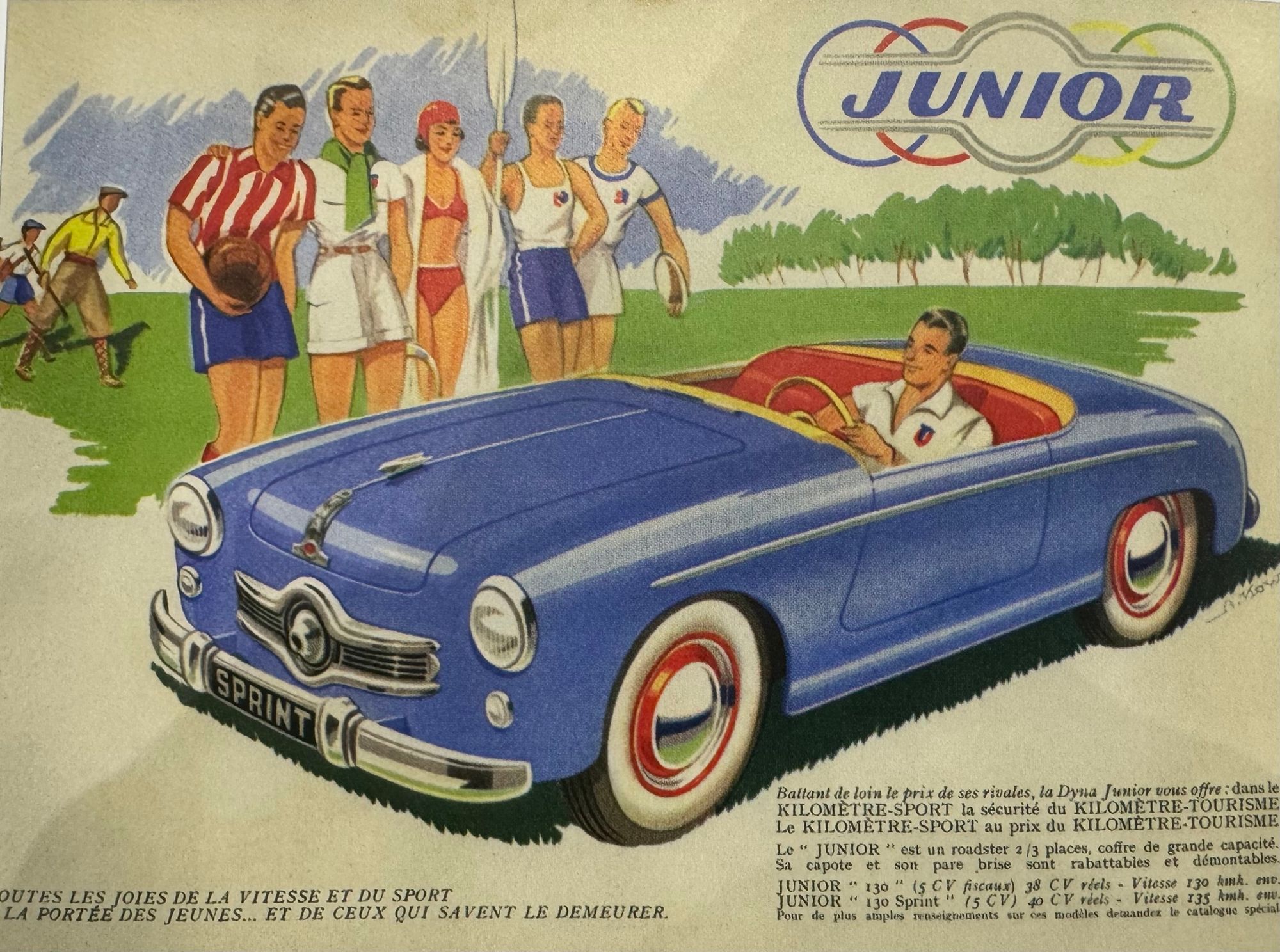
With the Dyna Junior, the objective was affordable fun, which was achieved with an impressive top speed of 130kph, mighty for a small 38bhp, 745cc air-cooled overhead valve twin-cylinder engine. Notably, this was as fast as the highly reputed Citroën Traction Avant at the time. The idea turned out to be a success – though production was to be initially limited to 500 units, due to massive public demand, a total of about 4,700 cars were eventually built between 1952 and 1956.
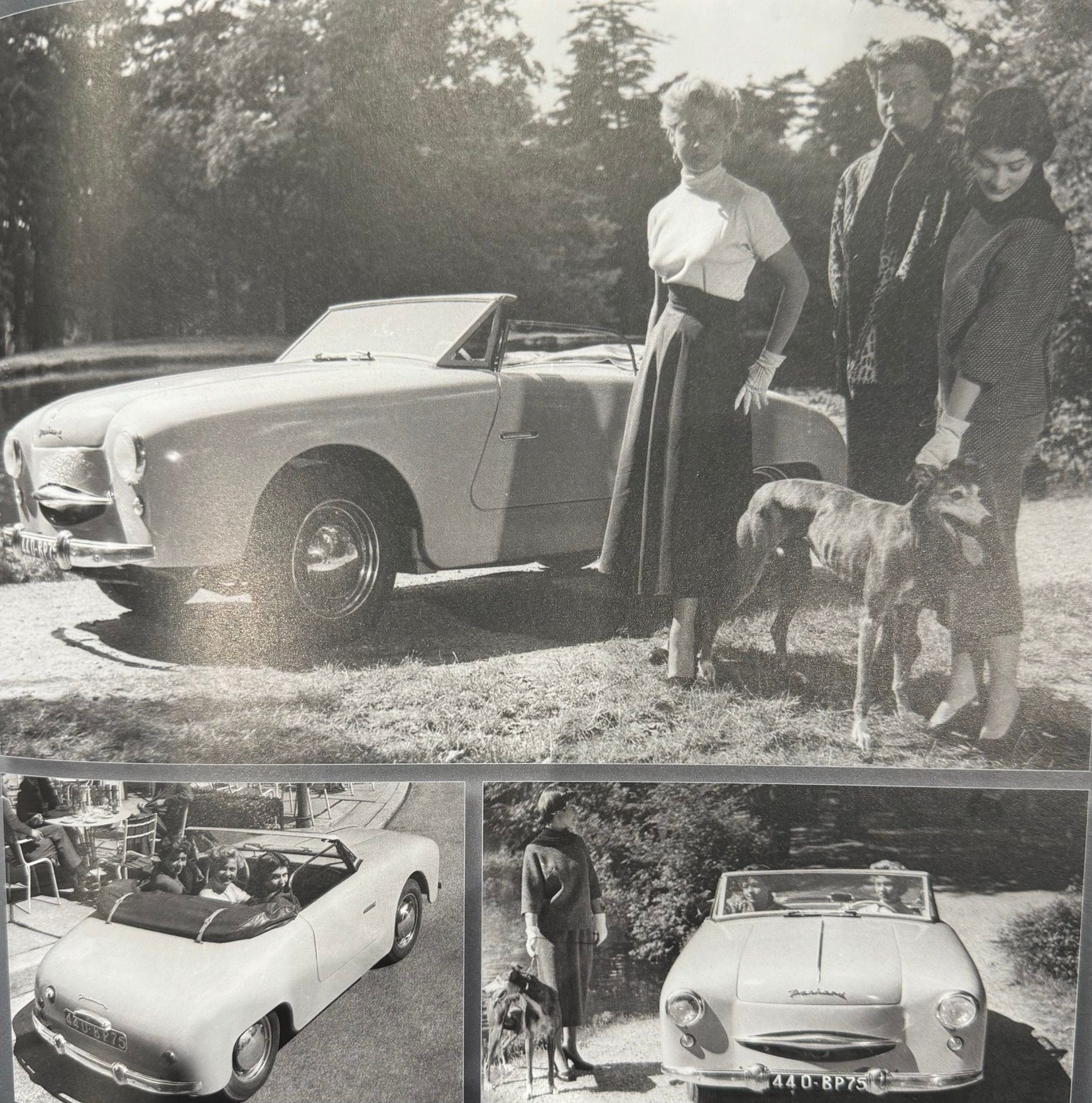
This was remarkable for the French small car market at the time, which left little scope for fun-to-drive cars. Unlike German microcars such as the BMW Isetta or even the 'sporty' Gutbrod Superior, the Dyna Junior was fast and exciting; unlike small British cars of the time, it was dynamically efficient.
The first time I saw a Panhard Dyna Junior was at the Art Automobile Concours d' Elegance in Gambais last year, which sparked my interest in these little French sports cars. Our editor, Gautam Sen, sensing my fascination, introduced me to Raphaël Galdos, who owns a 1953 cabriolet example with the updated 42bhp 851cc engine.
After months of planning and waiting for the weather to be kind to us, Raphaël and I finally drove around the heart of Paris in his delightful Dyna Junior on a Sunday morning.
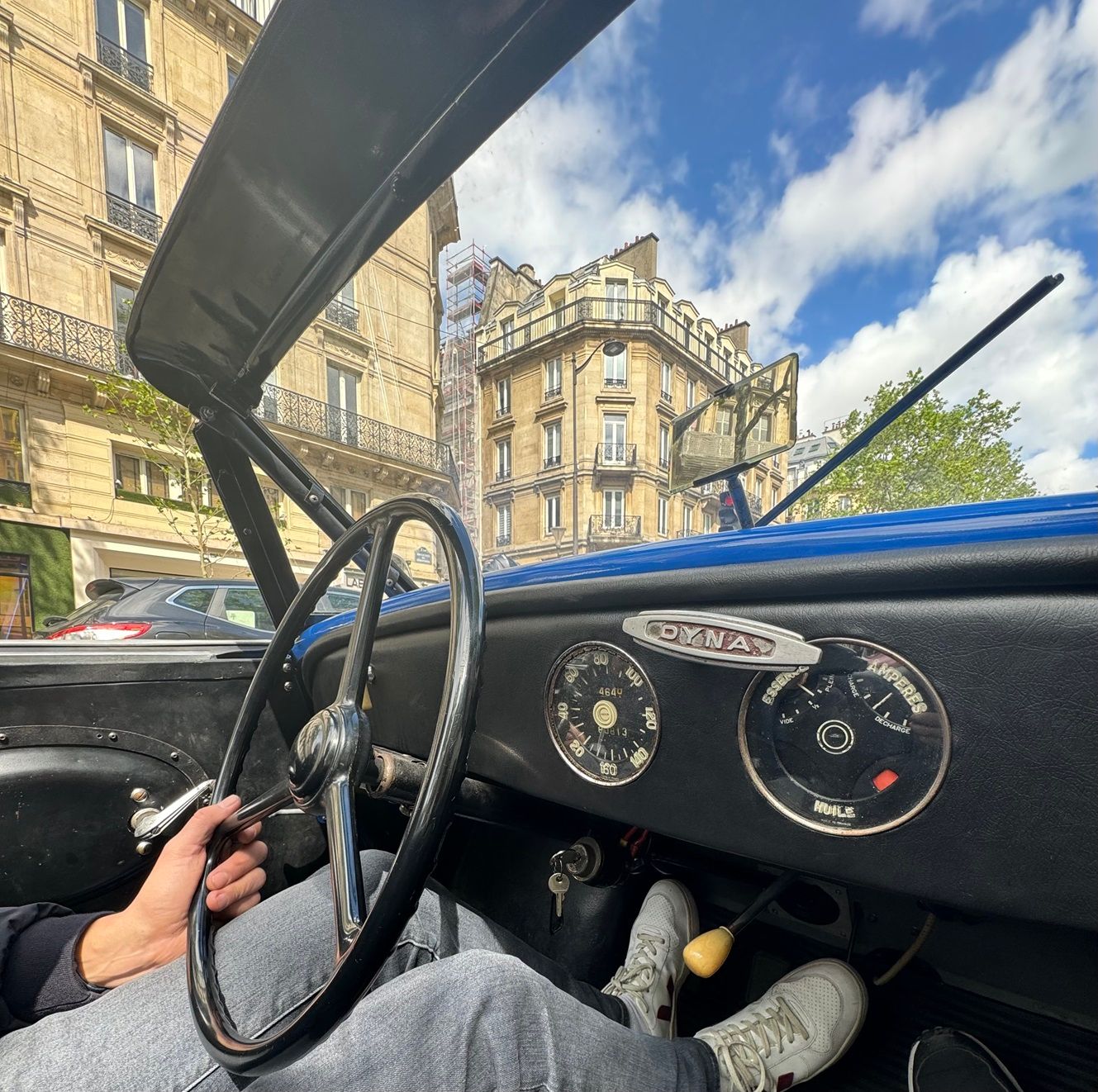
Raphaël has owned this car for over twenty years, but it is no garage queen. He has added more than 20,000km to the odometer over the course of his ownership. Impressive, given that it is not the most practical car. It has barely any storage space (yes, it does not have any useable boot space) and seating is limited strictly to two, with the rear seats best suited for pets.
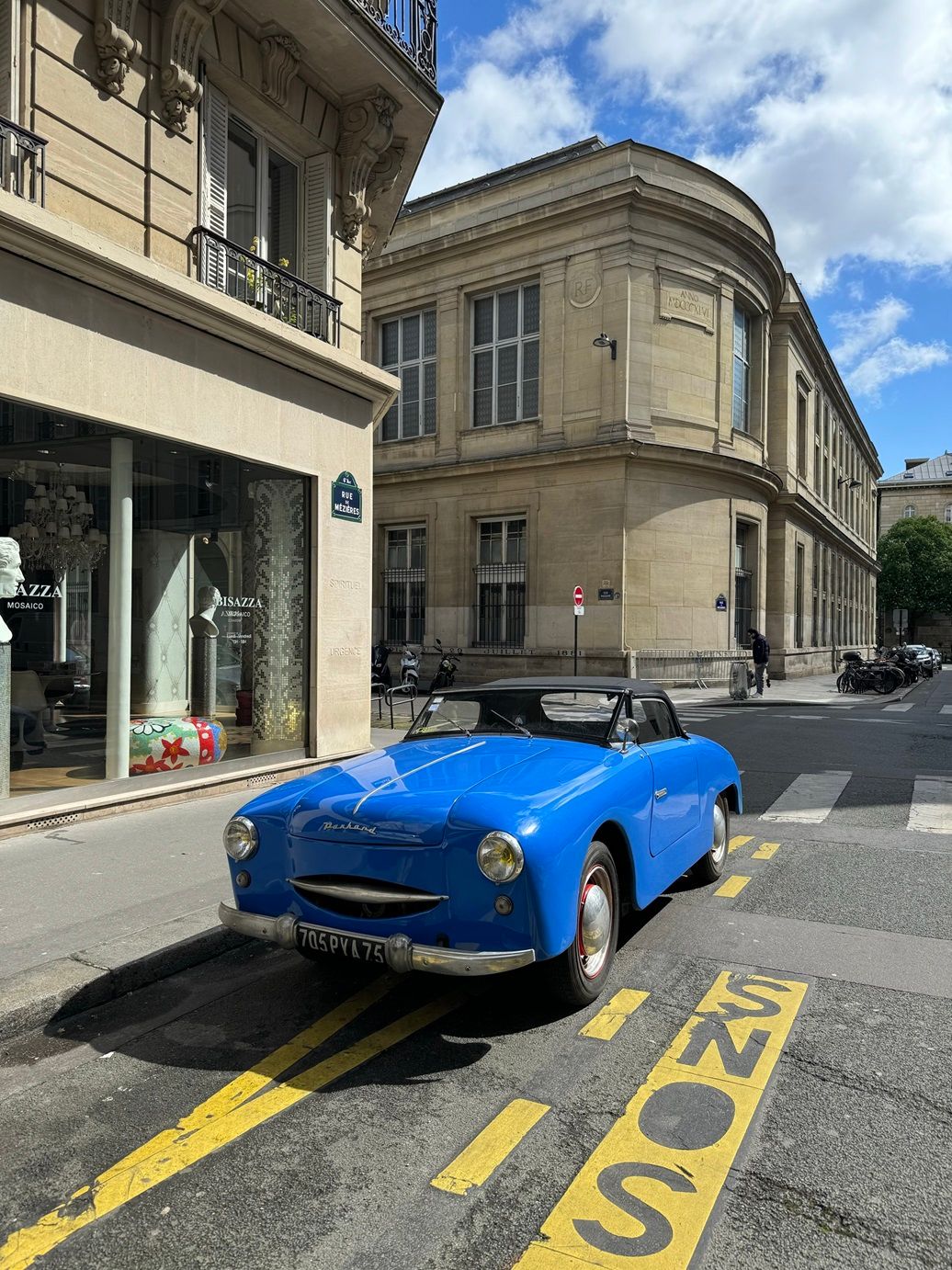
It is also not the easiest car to drive, as the small engine has almost no low-end torque and needs to be revved to extract the full 40 horses out of it. Add to that the unconventional gear lever, which is neither mounted to the steering wheel nor to the floor but rather placed under the dashboard. So, running through the three gears needs some getting used to.
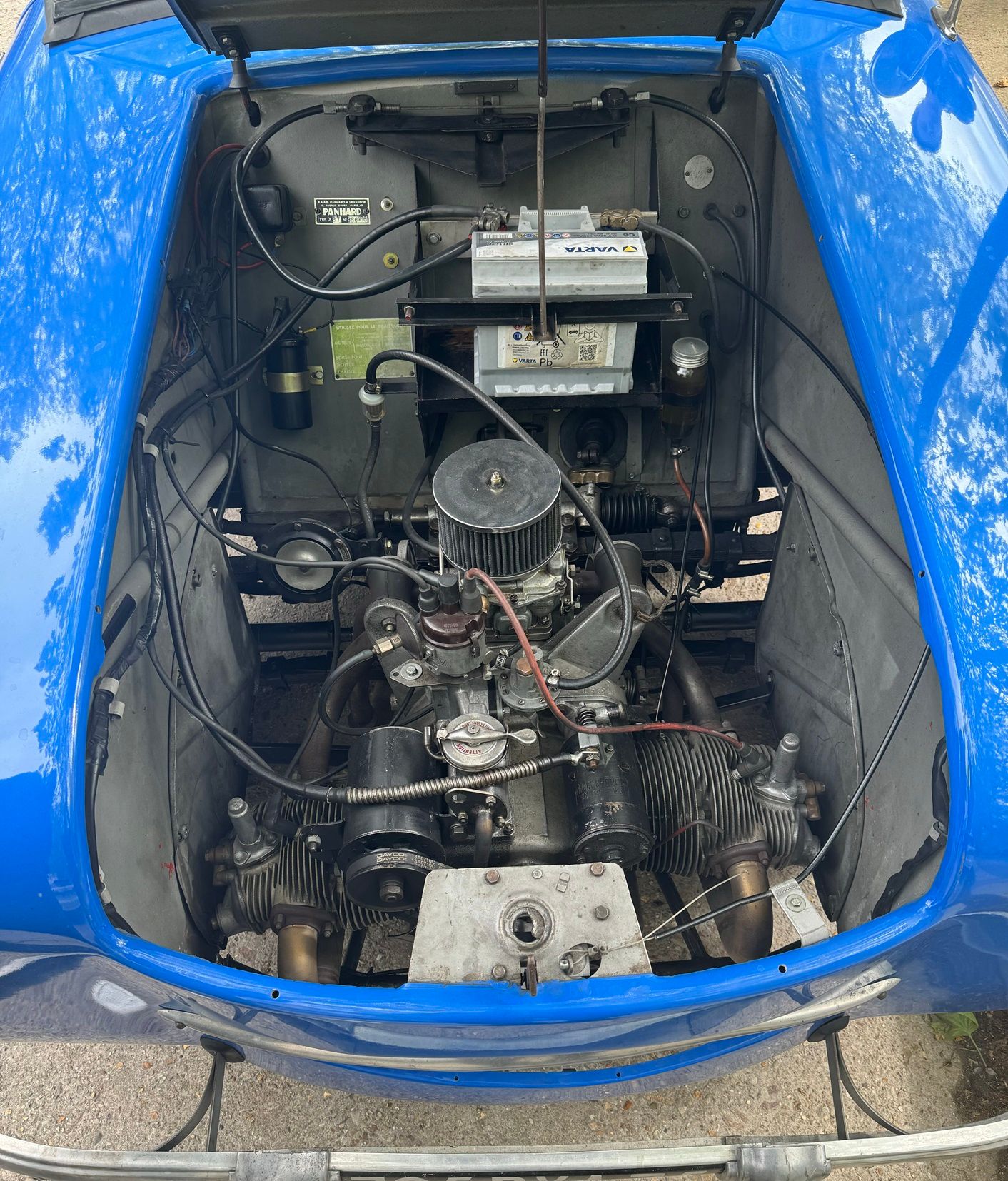
It is safe to say it requires some skill to drive this little Panhard, especially in Parisian traffic. But that is the joy of motoring, and there is no dearth of talent when it comes to Raphaël's driving as he casually double-declutches and heel-and-toes his way around the city thanks to the close placement of the clutch and throttle pedals.
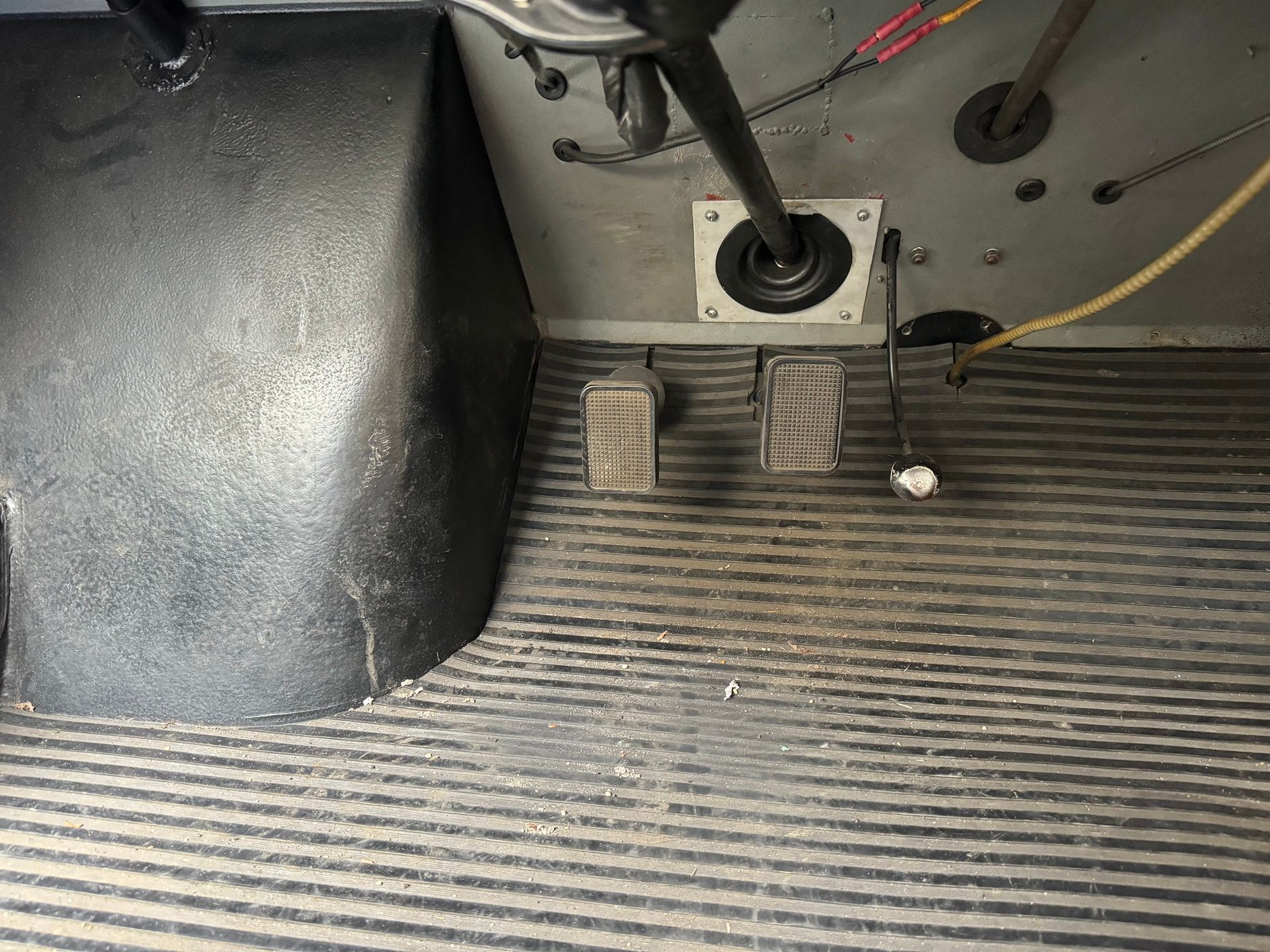
As Raphaël explains, this car is meant to be driven in anger; it is meant to be revved, and it seems to enjoy that.
I can sense the joy in Raphaël's voice as he conjures all his dexterity to drive the little Panhard while narrating the history of his car. He found it in a barn and acquired it for about 5,000 euro in 2004 – a steal, in my opinion, considering the rarity and the relatively low mileage of about 80,000km. It took him ten years to restore the car to its present condition. The restoration included a full engine and suspension rebuild.
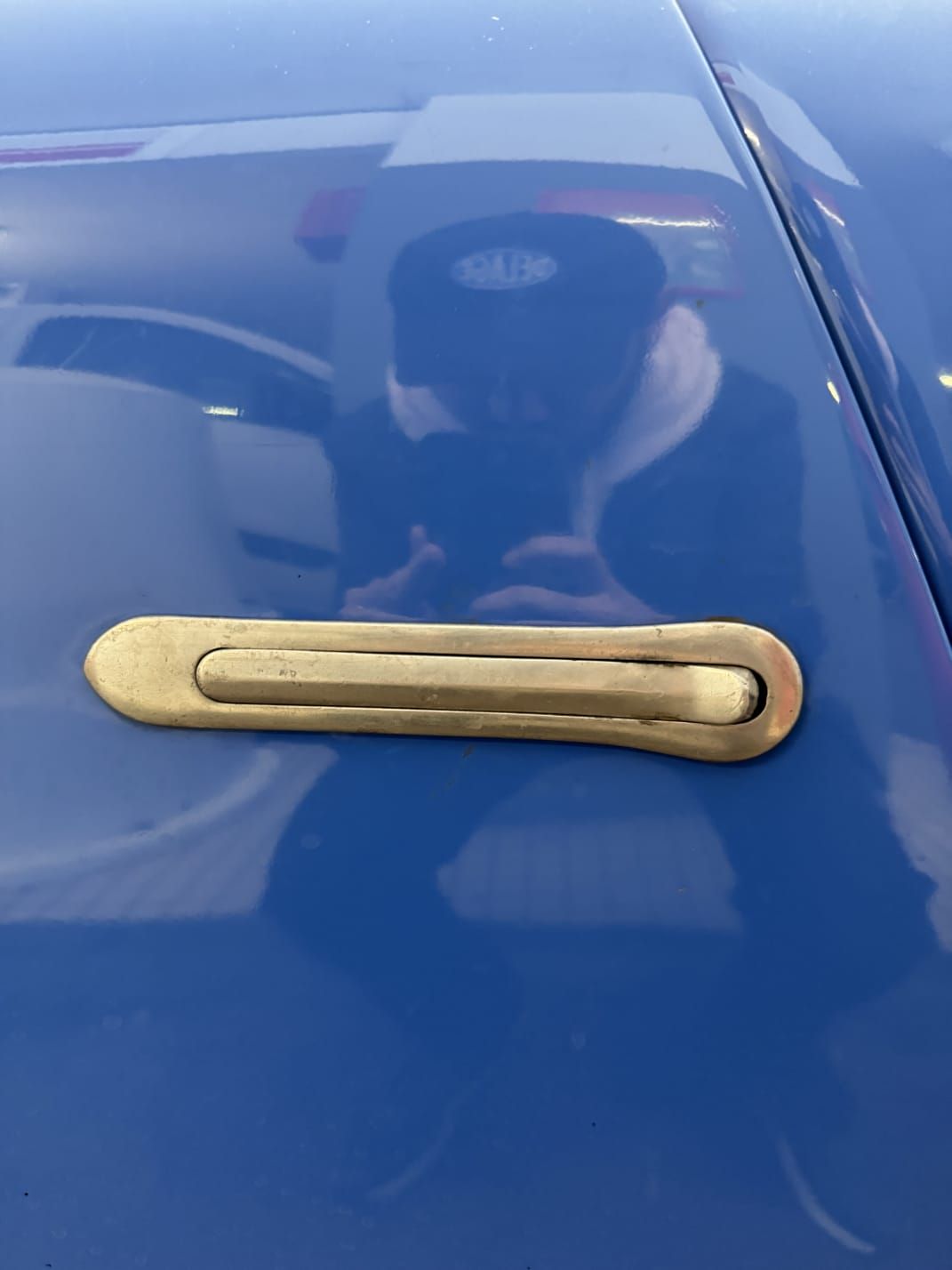
Interestingly, the car was painted in the 'French racing blue' colour in the 1970s when it was entered into some local racing competitions around France. So, it does not only look lovely in blue but also has some genuine racing heritage to justify the 'unoriginal' colour. The original colour, which was white/beige according to Raphaël, did not suit its personality in any case, if you ask me.
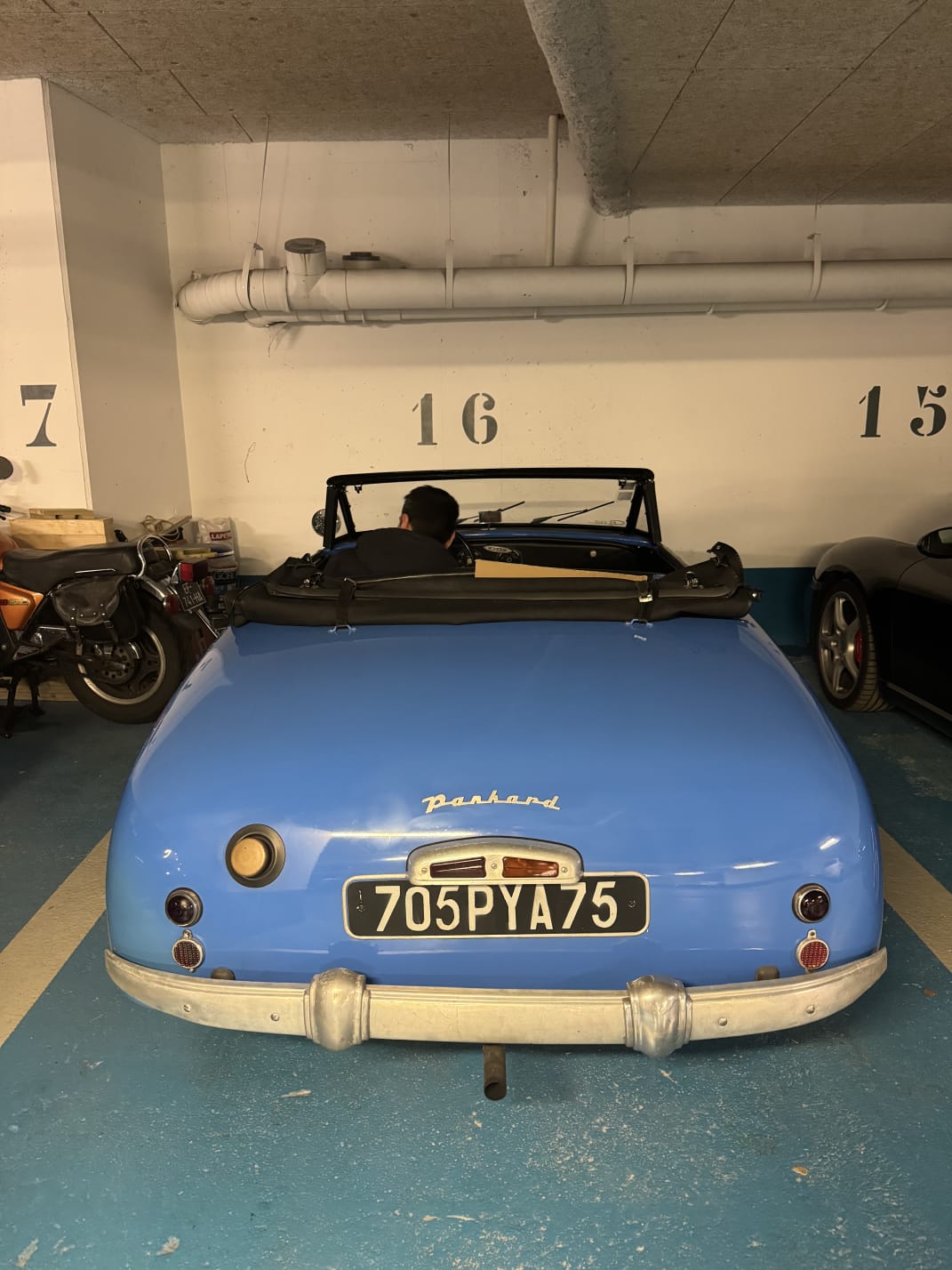
I was able to convince Raphaël to take the Panhard to Place Vauban, a popular spot for car meets in Paris, where its participation added to the eclectic variety. Despite the presence of an Espada and a 458, the Panhard got overwhelming attention from enthusiasts. I hope this motivates Raphaël to show his car at Place Vauban and other car meets more often!
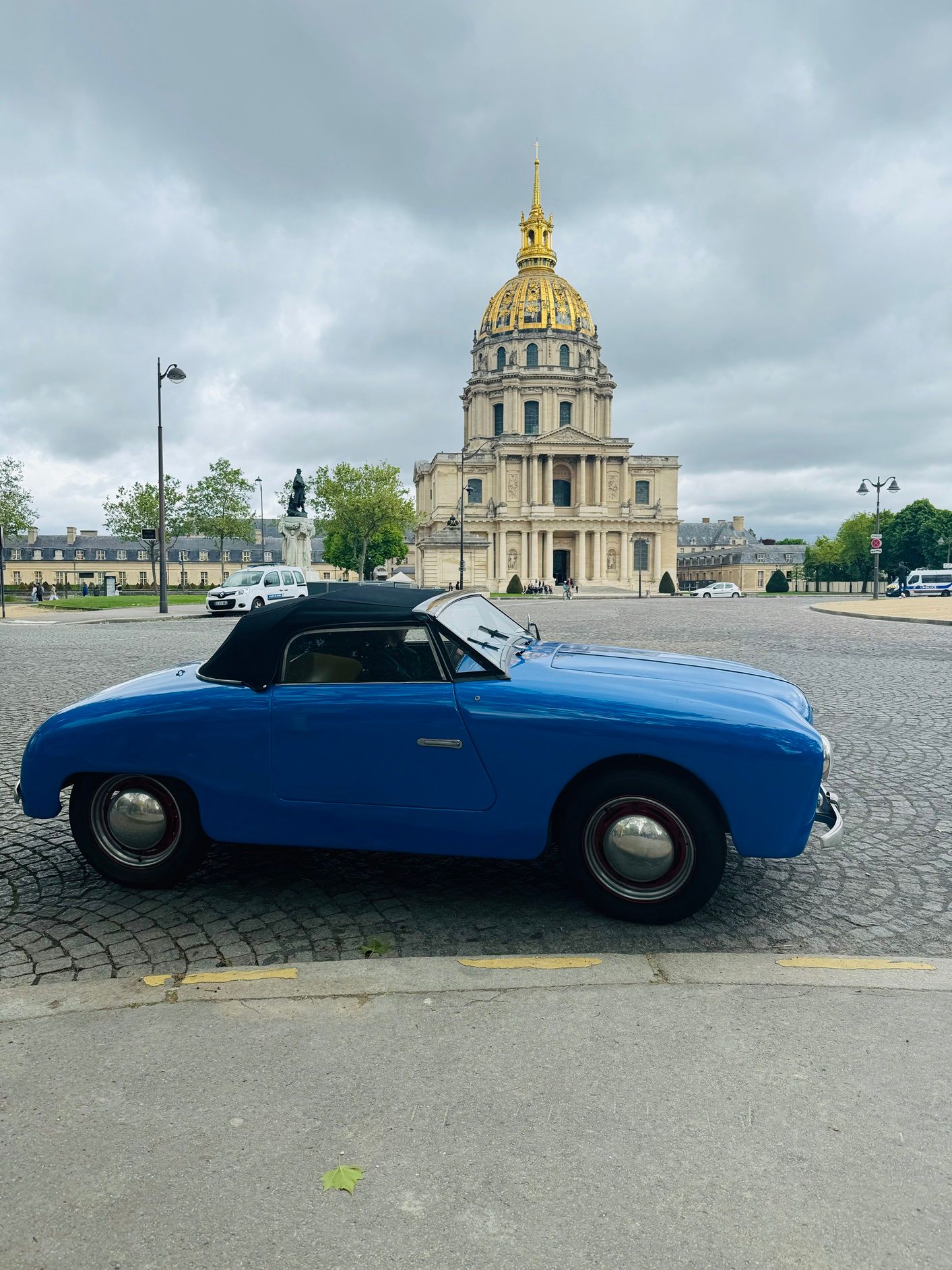
Comments
Sign in or become a deRivaz & Ives member to join the conversation.
Just enter your email below to get a log in link.
